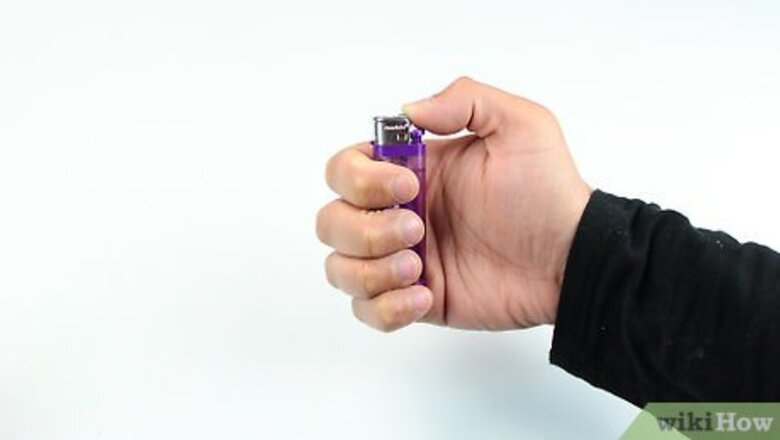
views
Lighting a Lighter
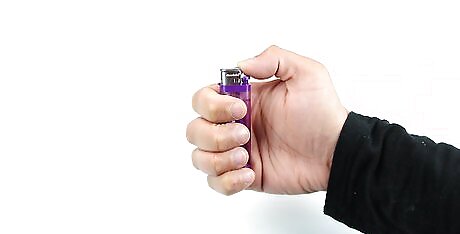
Hold the lighter in your dominant hand. Locate the sparkwheel and the ignition button. The spark wheel is made of serrated, hardened steel wire. When it is rotated with sufficient speed and force, it will strike a bar of flint within the lighter, creating a spark. The ignition button, when pressed, releases the gas valve to the fuel tank. In order to light the lighter, you'll need to strike the sparkwheel and hold the ignition button at the exact same time. Don't worry--the process is much simpler than it may sound. On Bic lighters, the ignition button is made of red plastic, and it sits on the fork of the lighter next to the sparkwheel. On Zippo lighters, the ignition button is round and metallic, and it is embedded into the lighter directly below the sparkwheel.
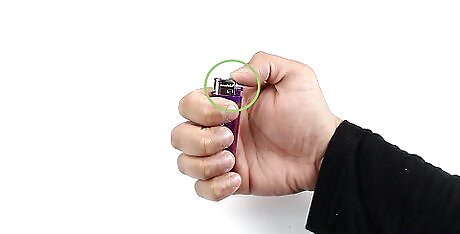
Rest your thumb on the sparkwheel. You can use the tip of your thumb, or either side--but make sure that you have the leverage to roll the sparkwheel into the ignition button. Your thumb should sit near the apex of the sparkwheel, but slightly down the arc toward the ignition button. Find a grip that feels comfortable. You may need to experiment with your thumb at several angles before you get it right. Apply light pressure to the sparkwheel, such that the sparkwheel presses into the ignition button and releases the gas valve. Now, you just need to make a spark.
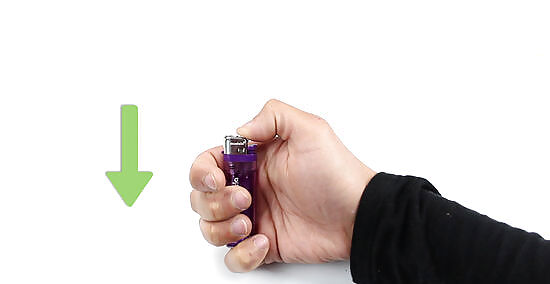
With a quick, powerful motion of your thumb, roll the sparkwheel down into the ignition button. Do not move anything but your thumb, and then keep holding down the ignition button to keep the gas flowing. If you don't see a flame, try again. If it works, the sparkwheel will strike a spark, which will ignite the gas that is released by the ignition button. You will know immediately: either the lighter will make a steady flame, or nothing will happen. If you roll the sparkwheel with sufficient speed and force, but the lighter sparks and does not ignite--try again. If the lighter continues to spark but not ignite, the gas reserves may be low or empty. Try using another lighter.
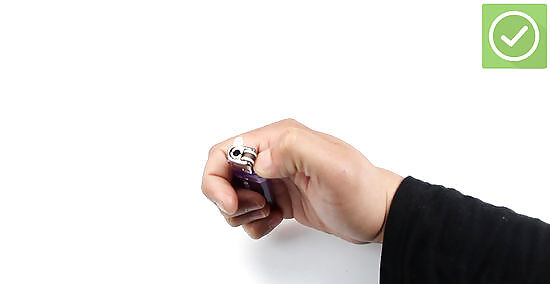
Keep trying until you make a flame. If you are having trouble, try pressing harder on the sparkwheel and placing your thumb slightly closer to the ignition button. This may give you extra leverage to apply more force. Make sure that you're rolling the sparkwheel fast enough. Grip the rest of the lighter with your other four fingers, as if clenching a fist around a stress ball, and only move your thumb. Keep your hand steady. Try pressing the ignition button once or twice without using the sparkwheel, just to make sure that you are pressing it down all the way. If you aren't applying enough force, you may not be releasing enough gas.
Safely Using a Lighter
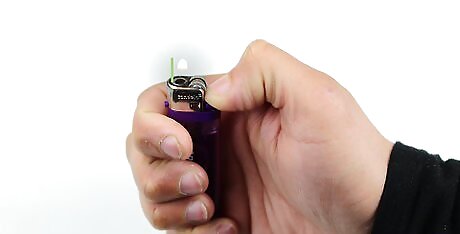
Hold the lighter vertically in your hand. Keep it below the thing that you are trying to light. The flame will remain vertical, regardless of the angle of the lighter, and you may burn your hand if you try to hold the lighter horizontally. Keep your hand away from the flame, and from the thing that you are lighting. Be careful not to burn yourself.
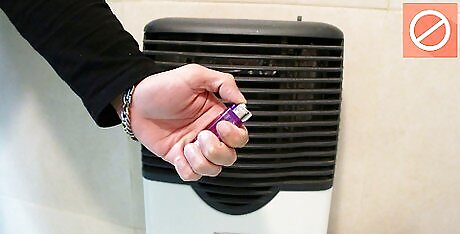
Be judicious with the flame. Fire is powerful, and it can easily take on a life of its own. Never light a fire that you aren't prepared to put out on your own. Avoid lighting fires in flammable settings, at least until you are more confident in your ability. Only strike your lighter in a well-ventilated area. If you smell gas in the air, or if you know that there has been a leak, don't risk igniting it. Avoid using your lighter while filling up gas, or while handling containers that have held flammable gas. Be especially cautious when lighting fires in dry woodlands or grasslands, particularly in the summer. Wildfires can burn thousands of acres from only a spark, and the wind can take a fire out of your control in an instant.

Do not allow your lighter to burn continuously for more than two minutes. If the lighter burns for too long, it will overheat, to the danger of your hand and any flammable surroundings. Lighters are made from metal and plastic, both of which conduct heat rather well. Be careful not to burn yourself. If a lighter grows too hot to handle, let it cool down for a few minutes before you resume using it.
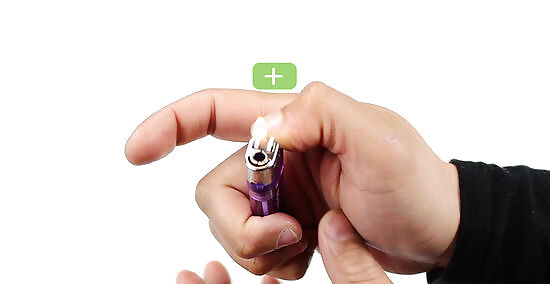
Consider adjusting the gas flow. Some lighters come with a small switch on the side--usually a black plastic back-and-forth switch between + and - signs. The + side will make the biggest possible flame, and the - sign will make the smallest possible flame. You can usually adjust the switch to any point in between. If you want to conserve gas, keep the switch toward the - side. Adjust as necessary. If you want a large, impressive flame, or if you want to keep your hand far away from the thing that you are lighting, keep the switch toward the + side. Be aware that this will guzzle the fuel reserves much more quickly: larger flame means more gas.

Be aware that butane lighters do not work well above 10,000 feet. If you're venturing to high altitudes, consider bringing matches.
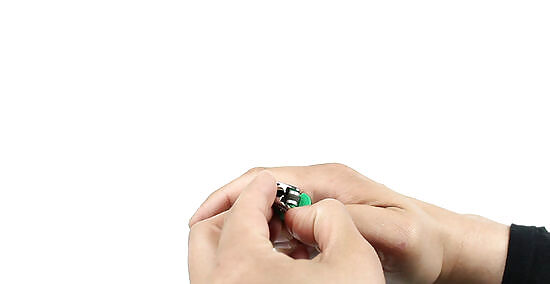
Consider removing the safety band from a Bic lighter to make it easier to light. This is the smooth band of metal that runs around the center of the spark wheel's circumference. This trick may help if you do not have the finger strength or the flexibility to turn the sparkwheel otherwise. Turn the sparkwheel until you find the gap in the safety band: a point where the metal does not quite meet. Stick a narrow but sturdy object, like a key or a screwdriver, through the flame hole of the lighter, and use the rim of the hole as leverage to pry the safety band apart. Work slowly, and protect your eyes--the safety band has been known to fly off suddenly. Be aware that the safety band is there to keep children from using the lighter. Your sparkwheel will turn more easily with the band gone, but make sure that you store it properly.
















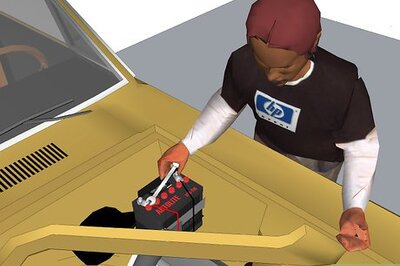

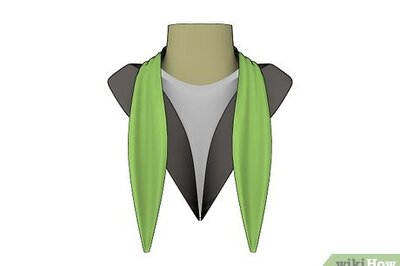

Comments
0 comment